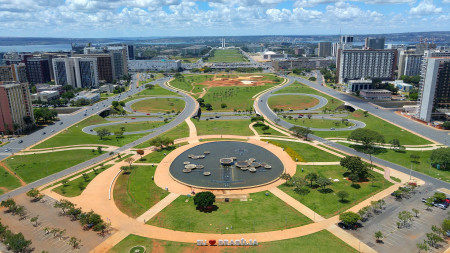
Search
Spatial Impacts of the Creation of Brasília: A Natural Experiment
Published: 2017
Authors: Valente J Matlaba, Jacques Poot, Arthur Grimes

Using data spanning 70 years (1939–2008), we examine whether Kubitschek’s planned creation of Brasília and its associated highway network had its intended effect of spreading development from Brazil’s coast to its interior. Specifically, we test whether the spatial structure of the country’s urban population and per capita GDP changed as a result of Brasília’s inauguration in 1960.
Uniquely amongst studies of Brasília’s impacts, we use a ‘spatial-difference-in-differences’ approach, contrasting pre-Brası´lia with post-Brasília outcomes. We control for macroeconomic conditions, fixed city-specific factors, convergence forces, changing industrial structure and agglomeration impacts arising from proximity to Sao Paulo and Rio de Janeiro.
We find a modest impact on population in the western coastal and western interior regions whose share of Brazil’s urban population increased from 4.8% (1959) to 9.0% (2008); our spatial-difference-in differences estimates show the impact to be statistically significant. We confirm per capita income convergence across regions, but we find no (descriptive or statistical) evidence of per capita income effects related to proximity to Brasília. Thus, even a massive development initiative such as Brasília’s creation is estimated to have had only limited population impacts and zero per capita income impacts on the spatial structure of Brazil’s economy outside of Brasília itself.
Citation
Grimes, Arthur, Valente Matlaba, Jacques Poot. “Spatial Impacts of the Creation of Brasília: A Natural Experiment”, Environment and Planning A, forthcoming. DOI: 10.1177/0308518X16684519


Level 1, 97 Cuba Street, PO Box 24390
Wellington 6142, New Zealand
Phone: 64 4 939 4250
 Back to main menu
Back to main menu
